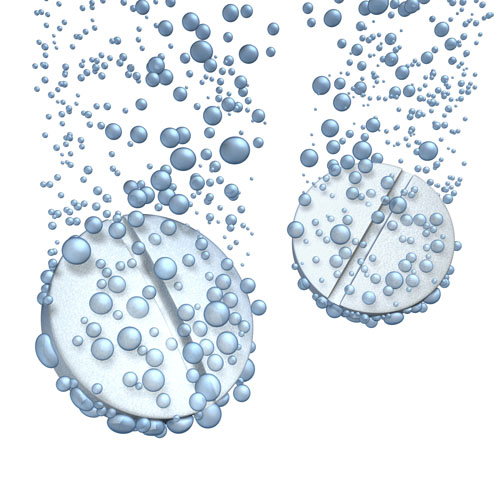When a drug substance is inherently incompatible with the aqueous environment of the human body, formulation and manufacturing techniques are used to deliver the drug substance to maximise its total bioavailability.
An example of one such technique is hot melt extrusion, in which the drug substance is suspended in a “solid solution” to increase its efficacy, explains Ameya Deshpande, Formulation Scientist at Avomeen.
Even active pharmaceutical ingredients (APIs) with adequate aqueous solubility are formulated with a variety of components. Together, they promote the stable and efficient delivery of the API and a specific therapeutic effect.
However, in pharmaceutical product development, it is estimated that more than 50% of NCEs have a large molecular weight and/or poor solubility in water. Because these APIs cannot be absorbed easily in the aqueous environments of our bodies, their delivery is more challenging.
A lack of bioavailability is not the only concern when formulating a drug; developers must also consider the chemical stability of these compounds. Poorly soluble, lipophilic APIs are often present in a solid crystalline state.

Ameya Deshpande
Although this is their most stable state, it is also the one in which they are least bioavailable. To compensate, manufacturers can raise the per unit dosage of the API, but this presents a number of drawbacks — from manufacturing safety concerns to increased toxicity and higher drug costs.
Enter hot melt extrusion
For some APIs, there is an alternative option. Compounds that are both hydrophobic and relatively thermostable are candidates for a manufacturing technique called hot melt extrusion (HME).
HME is a continuous pharmaceutical process that uses high temperatures and pressure to disperse the chemical at a molecular level into a “solid solution” state in which the API is essentially predissolved.
This drug manufacturing technique offers many advantages, such as increasing an API’s bioavailability so that less is needed per dose, enabling the timed release of the API, masking the taste of bitter APIs and enabling the production of thin films that serve as a convenient option for drug delivery.
HME is a highly versatile technique that traces back to the manufacturing of lead pipes at the turn of the 19th century. During that era, HME saw widespread use in the plastic, rubber and food industries.
In the 1970s, the technique was adapted for the production of pharmaceuticals, wherein its ability to mix chemicals together allowed manufacturers to produce formulations that overcame longstanding challenges.
Pharmaceutical formulation considerations
When using HME for pharmaceutical purposes, the material and carrier composition of a drug are crucial for the efficacy of the final product. The API is combined with functional excipients such as polymers, binding agents, matrix carriers, release-modifying agents, fillers, thermal lubricants, stabilising agents, plasticisers and antioxidants.
These are all chosen to complement the API’s function. The right excipients can produce molecular dispersions and solid solutions of adequate purity, minimise API degradation during HME processing and maximise pharmacological performance.
Fundamental to every formula is the matrix carrier that houses the API. These are typically made of a polymer or low-melting-point wax to withstand being melted and resolidified repeatedly.
The carrier is selected based on its miscibility or its ability to fully dissolve the API of interest and then release it at the desired rate. Additional considerations include carrier stability and functionality in its final cooled/reformed dosage form.

Importantly, carriers must have low melting points to prevent temperature-induced degradation of the API when the formulation is in its molten form.
The manufacturing process
During the HME process, ingredients are mixed, loaded into and pushed through the barrel and pipe of an extruder. All the ingredients are fed through the barrel by one or more rotating screws at a controlled temperature and pressure until the components are mixed to form a molecular dispersion of uniform composition.
The mixture comes out of the extruder through a die that gives it shape, but the product may also be cut or formed into a pellet, sphere or thin film if desired.
The process varies depending on the specific ingredients being used, so developers must optimise the rate and pitch at which the screws push the molten formula through the extruder, the viscosity of the formula and the temperature at which the process occurs.
Throughout manufacturing, analytical technology such as near infrared (NIR) and Raman spectroscopy, ultrasound and DSC systems should be used to assess the quality of the product.
Advantages of HME
Overall, HME is an efficient manufacturing technique for the production of a range of remarkably safe formulations. HME does not require solvents that can be harmful to employees and the environment. From a worker safety standpoint, they are well-protected during manufacturing, limiting accidental drug exposure.
HME is particularly well-suited for formulations with low compressibility ingredients that flow easily as powders and for APIs that are reactive with oxygen, as an active extrusion channel contains very little air.
Another major strength of HME is speed: it does not require downstream processing to achieve a finished product. Thus, while highly thermostable APIs are the best candidates for this process, more labile APIs and ingredients may be included if they go through the extrusion process quickly enough that degradation is negligible.
In contrast, certain heat-sensitive APIs, such as proteins, peptides and antibiotics, are not suitable candidates. Developers should choose partners to conduct careful preformulation activities and pilot studies to characterise their API’s stability on a case-by-case basis to determine if a given formulation is suitable for this technique.
HME can stably incorporate poorly soluble, lipophilic drugs into virtually any kind of solid dosage form. These can include immediate, controlled release and orally disintegrating tablets (ODTs), softgel capsules, nanotechnology, microencapsulated drugs, targeted drugs, floating drug delivery systems, stickpacks, thin films, intravaginal rings and subcutaneous or intraocular implants.
For each of these dosage forms, manufacturing using HME enhances the bioavailability of poorly water-soluble drugs by predissolving APIs in an amorphous state and/or incorporating the drug into a hydrophilic polymer matrix.

The enhanced bioavailability of an API means that a greater proportion of the active compound can reach a patient’s systemic circulation, requiring a smaller amount per dose to have the desired medicinal effect.
Formulations that contain smaller doses are subsequently cheaper to produce and safer for patients to take … as they confer a reduced risk of side-effects. Additionally, HME formulation can be used to mask the bitter taste of APIs, either by decreasing their solubility in saliva or by altering the interaction of the API with taste buds.
Both taste-masking tactics reduce the unpleasant flavour of oral drugs to improve the patient’s experience. Because of improved safety profiles and taste, drugs produced by HME often experience better compliance.
HME also offers manufacturers the ability to incorporate more complex dosing qualities into the drugs that they produce. For example, the API may be suspended in a water-insoluble carrier such as carnauba wax, ethyl cellulose or another polymer to control the rate at which the API diffuses.
Various other polymeric carriers of varying molecular weights and low molecular weight components such as waxes, sugars and sugar alcohols may also be used for different purposes.
For example, manufacturers can select components to produce drugs that incorporate a reservoir system, varying the release profiles of one or more APIs simultaneously. Controlled release profiles ensure that the right amount of API is being delivered to the patient at the right time.
Seeking a manufacturing partner
Drug production by HME can be challenging because the technique requires a fine-tuned formulation and careful consideration of the manufacturing process parameters. Developers should look for a partner that has the equipment, expertise and experience necessary for the development of the desired formulation.
By seeking a manufacturing partner with a strong understanding of HME theory, a quality by design approach and a proven track record, developers can confidently move forward to manufacturing pharmaceutical products by HME.
Further reading
- H. Patil, R.V. Tiwari and M.A. Repka, “Hot-Melt Extrusion: From Theory to Application in Pharmaceutical Formulation,” AAPS PharmSciTech 17(1), 20–42 (2016).
